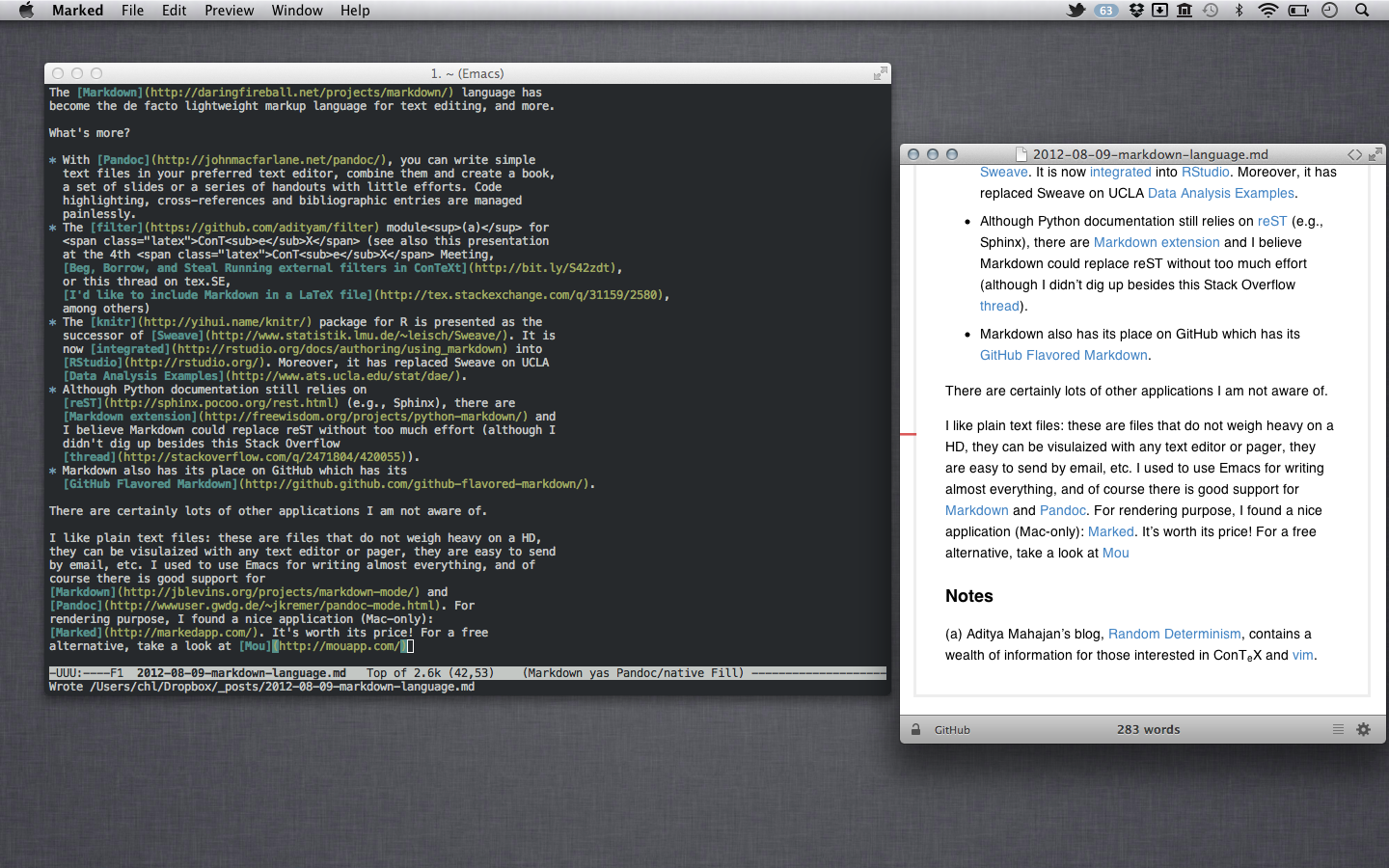Markdown everywhere
The Markdown language has become the de facto lightweight markup language for text editing, and more.
What’s more?
With Pandoc, you can write simple text files in your preferred text editor, combine them and create a book, a set of slides or a series of handouts with little efforts. Code highlighting, cross-references and bibliographic entries are managed painlessly.
The filter module1 for Context (see also this presentation at the 4th Context Meeting, Beg, Borrow, and Steal Running external filters in ConTeXt, or this thread on tex.SE, I’d like to include Markdown in a LaTeX file, among others)
The knitr package for R is presented as the successor of Sweave. It is now integrated into RStudio. Moreover, it has replaced Sweave on UCLA Data Analysis Examples.
Although Python documentation still relies on reST (e.g., Sphinx), there are Markdown extension and I believe Markdown could replace reST without too much effort (although I didn’t dig up besides this Stack Overflow thread).
Markdown also has its place on GitHub which has its GitHub Flavored Markdown.
There are certainly lots of other applications I am not aware of.
I like plain text files: these are files that do not weigh heavy on a HD, they can be visualized with any text editor or pager, they are easy to send by email, etc. I used to use Emacs for writing almost everything, and of course there is good support for Markdown and Pandoc. For rendering purpose, I found a nice application (Mac-only): Marked. It’s worth its price! For a free alternative, take a look at Mou. My basic setup at the moment consists in typing my text in Emacs while I have an open Marked preview next to it, as shown below. Simplicity matters.

Aditya Mahajan’s blog, Random Determinism, contains a wealth of information for those interested in Context and vim. ↩︎